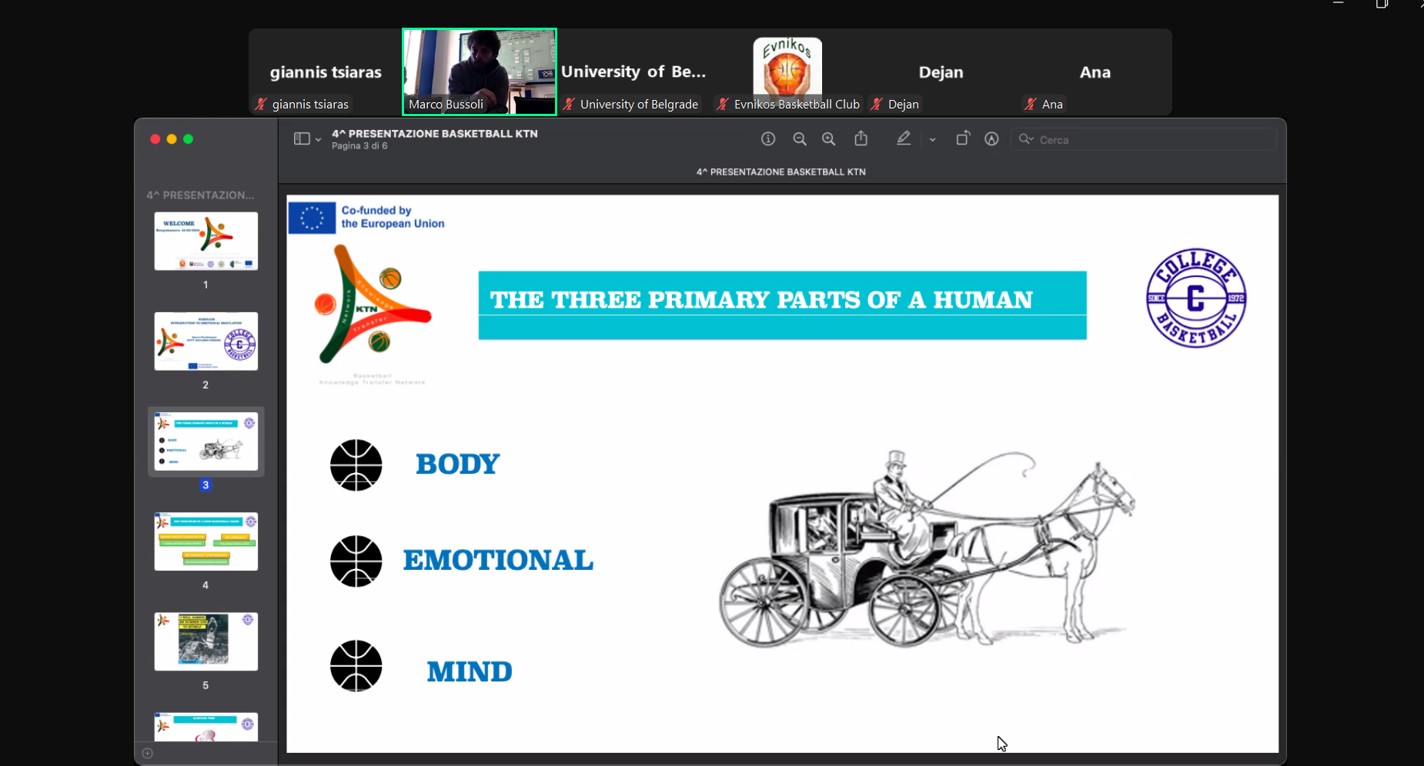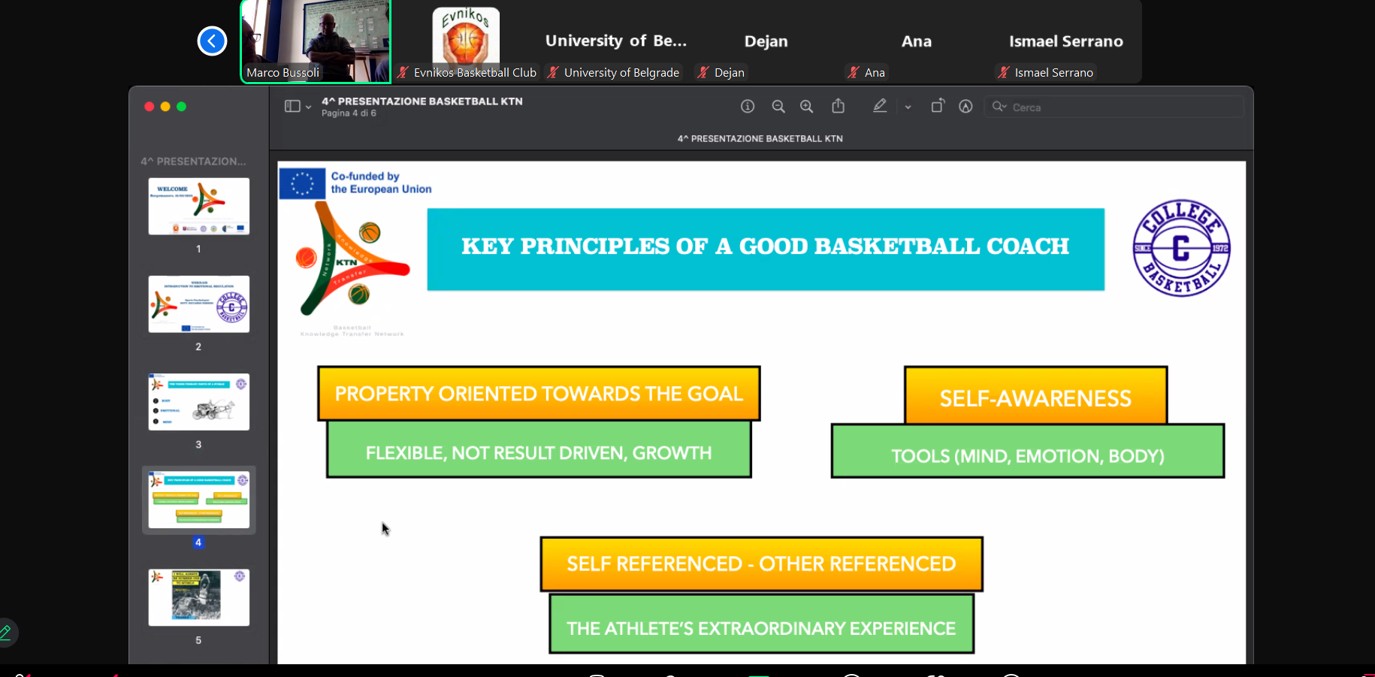Introduction to empotional regulation interactive practice with Phsychologist (online practice U17 example)
As part of the ongoing knowledge transfer activities within the Basketball-KTN project, Basketball College, the responsible partner for this initiative, organized a webinar dedicated to the psychology of emotion management in sport. The session featured Dr. Riccardo Parrini, a distinguished sports psychologist who works closely with the College, both in coach education and in providing psychological support to athletes.
In the first part of the meeting, Dr. Parrini explored the complex relationship between emotions and performance, a topic equally relevant to young athletes and coaches. He explained that human experience is composed of three interconnected dimensions — the body, the emotions, and the mind — which continuously influence one another. Understanding and balancing these elements, he noted, is fundamental to achieving consistent performance and psychological well-being.
To make these concepts more relatable, Dr. Parrini used real-life examples from training and competition, alongside a vivid metaphor of a horse-drawn carriage. In this metaphor, the body represents the horse, emotions are the driving energy, the mind acts as the coachman guiding the direction, and the passenger symbolizes the individual’s inner purpose — the one who ultimately decides where to go.
He emphasized that setting clear and meaningful goals is one of the defining characteristics of an effective coach. Achieving this requires learning how to align mind, body, and emotions to work together in harmony. When these three elements are balanced, athletes can perform with clarity, confidence, and resilience — essential qualities both in sport and in life.
Through initiatives like this, Basketball College and Basketball-KTN continue to highlight the importance of integrating psychological awareness into sports education — reminding us that true coaching success lies not only in tactics and technique, but also in understanding the human side of performance.

